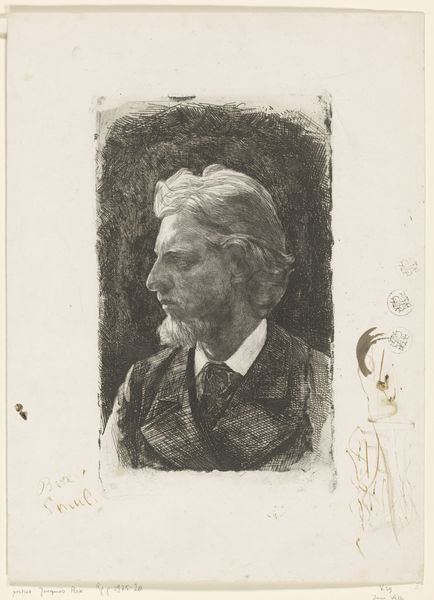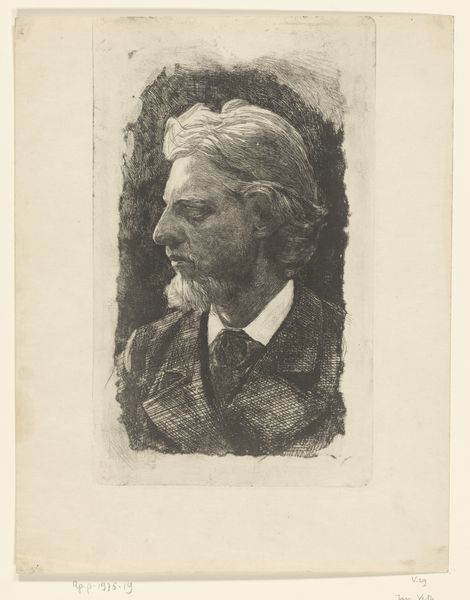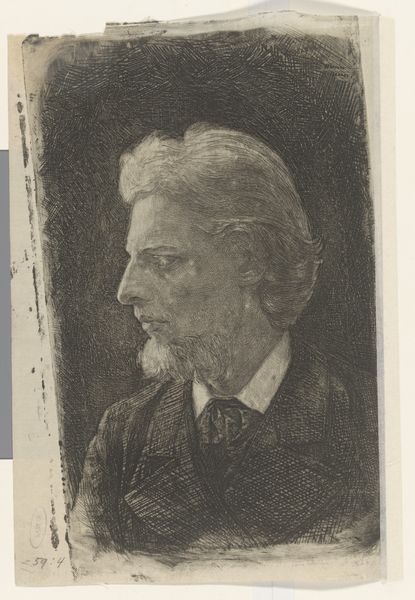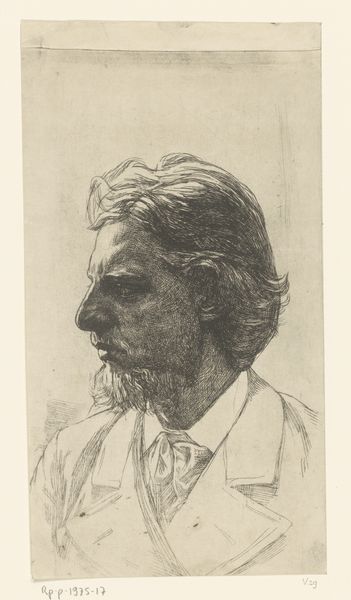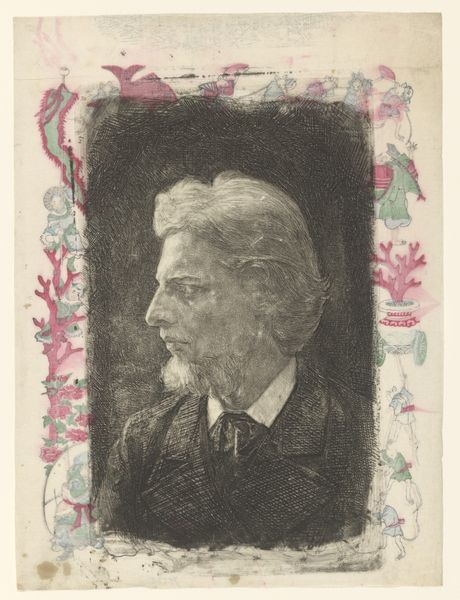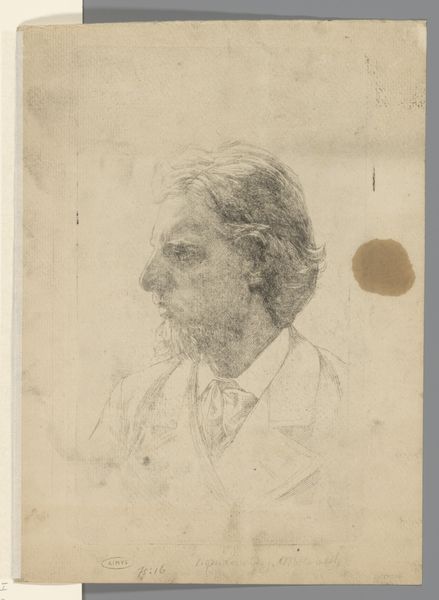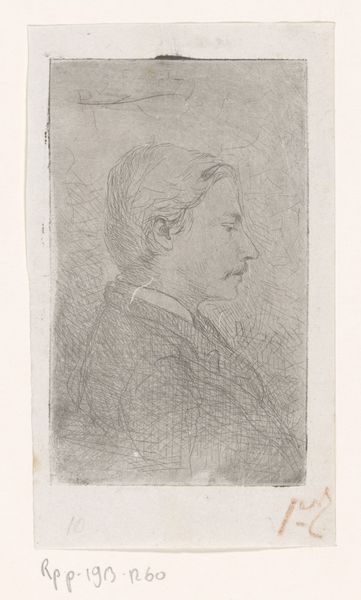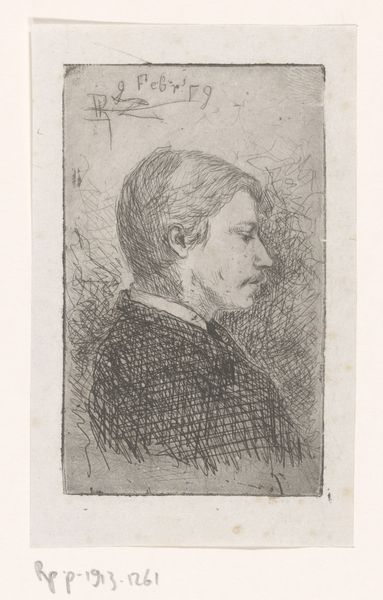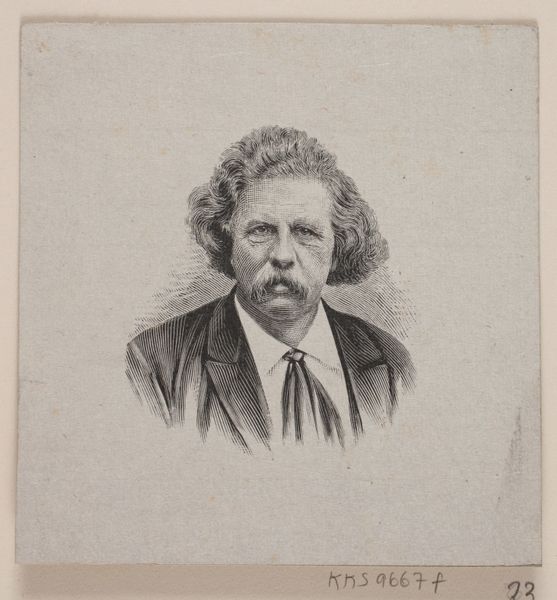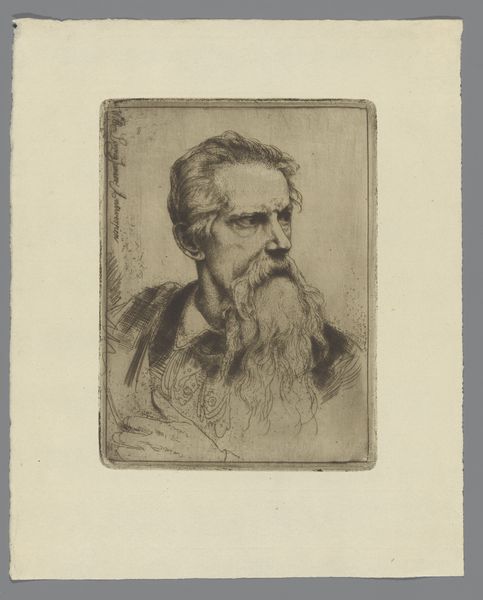
drawing, pencil
#
portrait
#
pencil drawn
#
drawing
#
16_19th-century
#
pencil sketch
#
charcoal drawing
#
pencil drawing
#
pencil
#
realism
Dimensions: height 274 mm, width 162 mm
Copyright: Rijks Museum: Open Domain
Curator: We're looking at Jan Veth's portrait of Jacques Perk, executed in 1887 and housed here at the Rijksmuseum. It’s rendered primarily in pencil. Editor: The shading! I'm struck immediately by the weight of the dark charcoal or pencil strokes that both define and almost imprison Perk's profile. There's an emotional intensity created by that contrast. Curator: It’s interesting you mention that. Veth, like many artists of his time, was fascinated by capturing likeness, but also deeply engaged with the materiality of the drawing itself. Consider the grade of pencil, the pressure applied. It isn’t just a portrait; it’s an investigation of technique and craft. Editor: Indeed. But isn’t it also a carefully constructed visual representation of Perk, a literary figure, immortalized through this medium? The profile, a classic symbol of nobility and intellect, almost harks back to ancient coins or busts. We perceive him through the symbolic language of portraiture. The soft beard gives a philosopher look too, while it also provides softness to contrast the harshness of the overall shading. Curator: Good point about the classical allusions in composition. Think about the labor involved in creating such detail with pencil. The artist’s hand becomes an extension of a whole social structure invested in the symbolic value of this artistic process, giving not just the portrait weight, but to who gets memorialized like this. Editor: But isn't there also a deeper symbolic meaning at play here? This image, produced after Perk’s early death, elevates him to an almost iconic status. Look at the gaze— directed upwards and slightly outward, as if searching. It embodies a sense of yearning and romantic idealism typical of that era. Curator: So the *use* of the pencil creates that specific aesthetic for this iconic individual! Editor: Exactly. It’s an exploration of Perk’s identity but filtered through layers of symbolic weight and the emotional response to his early death. A response enhanced by what some may see as harsh and some may see as expressive application of pencil or charcoal strokes in the portrait. Curator: This has me seeing it more now as a physical, even monumental, dedication, and not just as something representative. Thanks for that different perspective. Editor: Likewise, the emphasis on the sheer materiality brings new understanding to what symbols were used and why. It truly gives it weight in history.
Comments
No comments
Be the first to comment and join the conversation on the ultimate creative platform.


